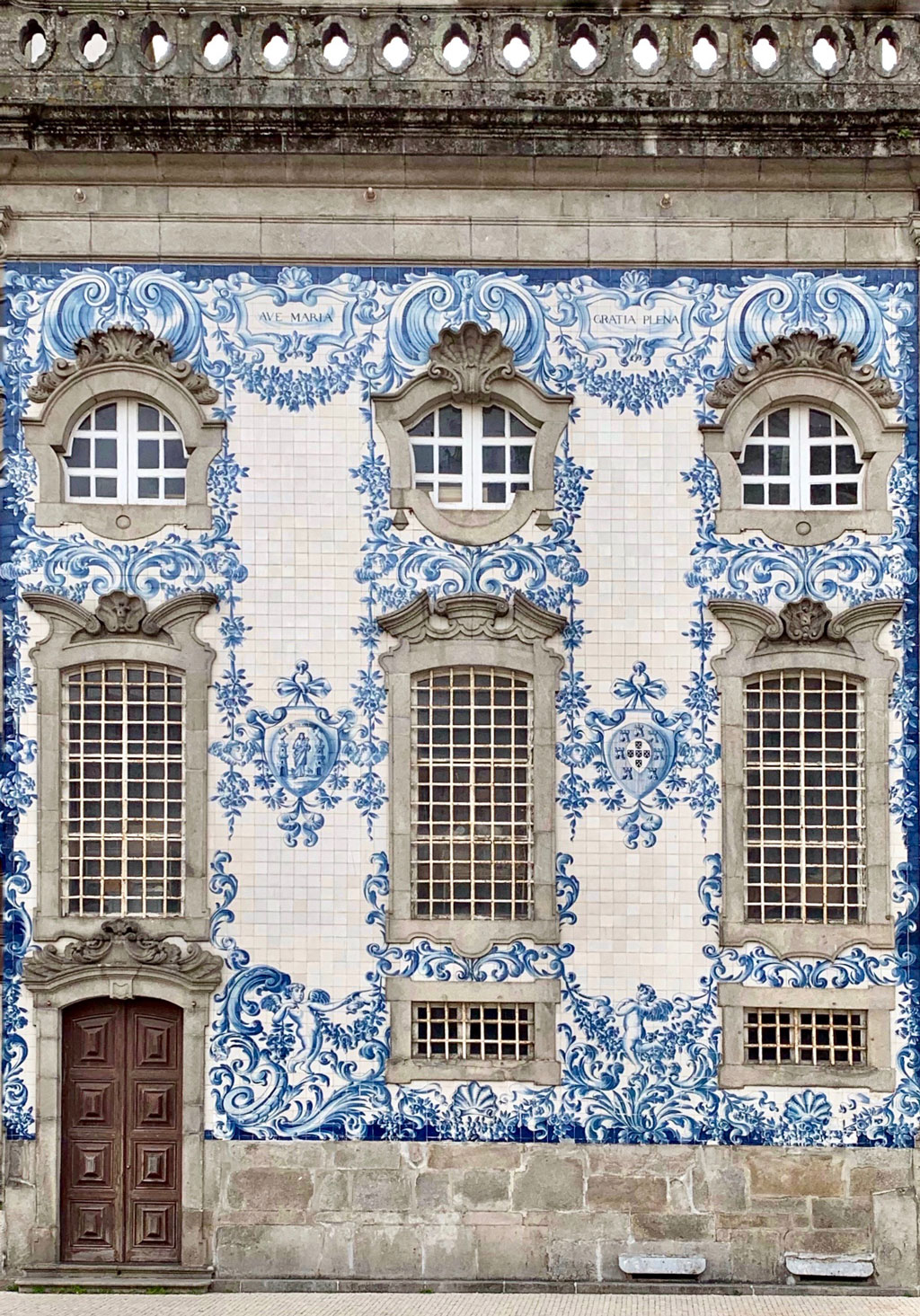
Explore Stunning Azulejos of Portugal and How to Make Your Own Story at Every Corner
Dena Levitz From a few steps back, the artfully painted panorama of Lisbon at the National Azulejo Museum is an impressive sea of blue and white. Portraying every cathedral, bridge and shipyard in.

Azulejos Portugal Rivestimento
A world heritage. — Google Arts & Culture The Azulejo in Portugal. An identitary art. A world heritage. Understand the Portuguese "azulejo" and why it is such a unique decorative language By.
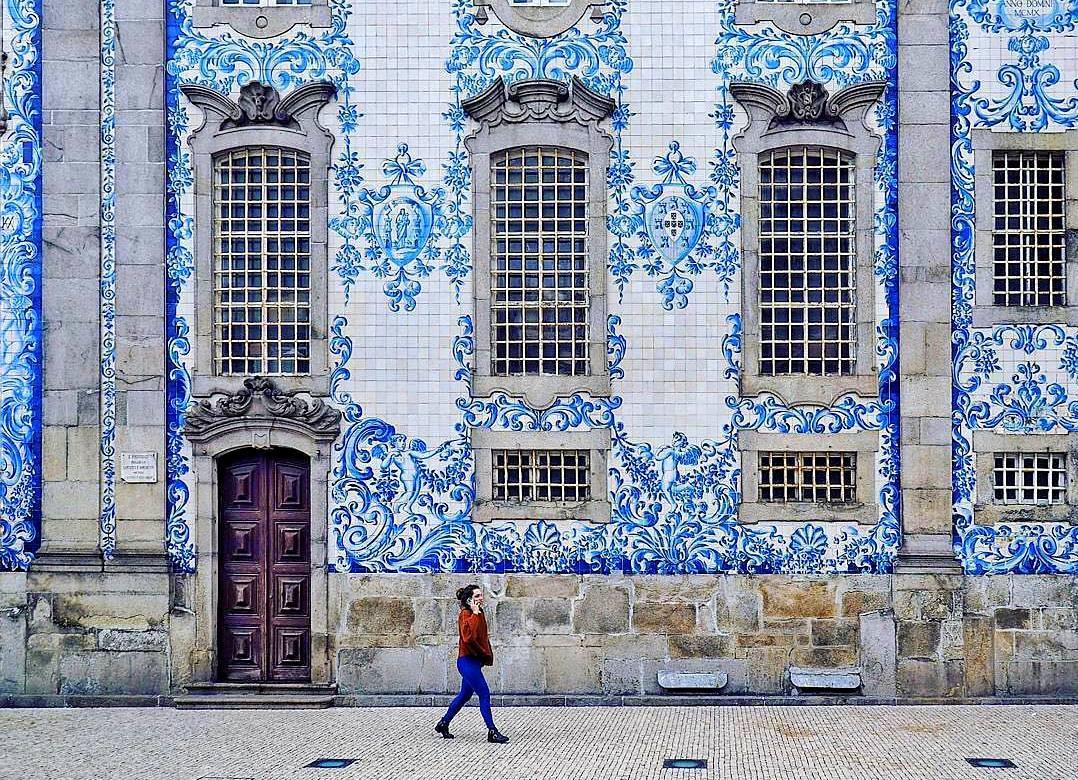
Azulejos portugueses origen e historia VortexMag
Azulejos date as far back as the 13th century, when the Moors invaded the land that now belongs to Spain and Portugal, but they secured their foothold in Portuguese culture between the 16th and 17th centuries. The word azulejo stems from Arabic roots, meaning 'small polished stone'.
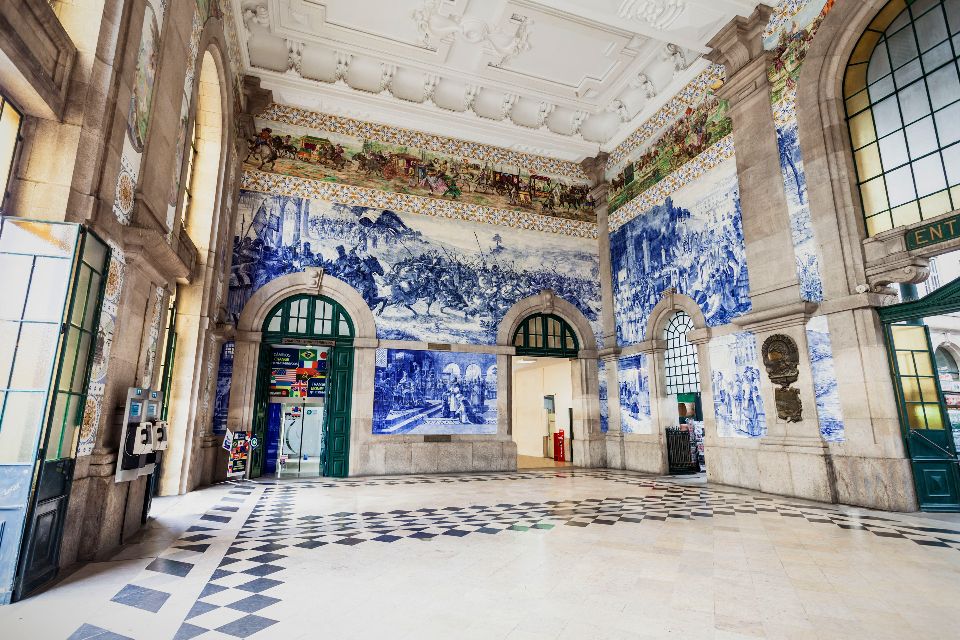
Azulejos Northern and central Portugal Portugal
Introduced by the Moors in the 13 th century, azulejos are small ceramic tiles in shades of blue and white. Once arranged, they form geometric motifs depicting scenes from life. You can't get away from them in this city where indigo is the dominant colour. São Bento railway station
Merlin and Rebecca Portuguese Azulejos
The stunning azulejo mosaics wrap around the main garden and adorn many walls, but the Battle Room may be the property's MVP in terms of beauty and has even been nicknamed the "Sistine Chapel of Tile Panels". *Tip: If using the metro to navigate the city, take the blue line to the Jardim Zoologico and walk 15-20 minutes to the palace.
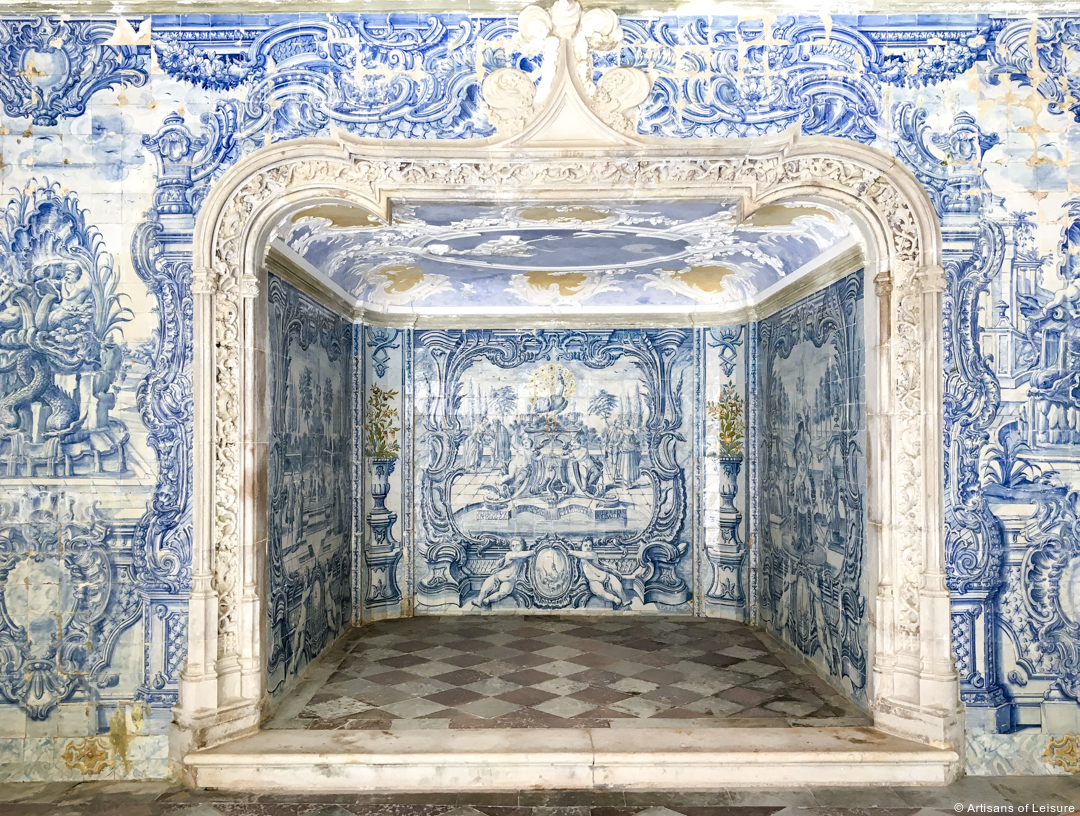
Azulejo Tiles and Blue and White Ceramics Luxury Portugal Tours
azulejo, (from Arabic al-zulayj, "little stone"), Spanish and later principally Portuguese tiles produced from the 14th century onward.At first the term was used to denote only North African mosaics, but it became the accepted word for an entirely decorated tile about 5 to 6 inches (13 to 15 cm) square. In the 15th and 16th centuries, Portugal imported azulejo tiles from Spain, and their.

Azulejos, série Portugal
It's easy to think that the word 'azulejo' comes from the Portuguese word 'azul', which means blue. Many of the Portuguese tiles have blue designs after all. But the origin is actually the Arabic word 'az-zulayi', which means 'small polished stone'.

Azulejos Northern and central Portugal Portugal
Azulejo - Wikipedia [aθuˈlexo] [ɐzuˈleʒu, ɐzuˈlɐjʒu] [1] [2] are found on the interior and exterior of , ordinary houses, schools, and nowadays, restaurants, bars and even form, but also had a specific functional capacity like to this day and are fixtures of buildings across Portugal, Spain and their former territories.
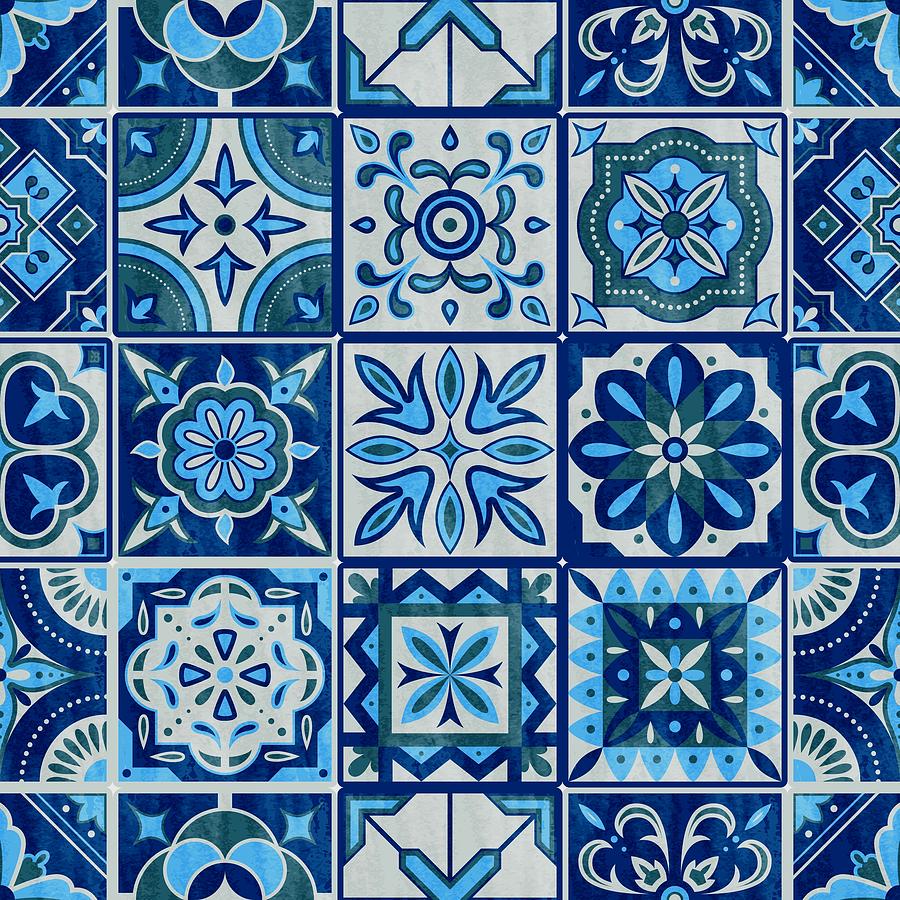
Azulejos Portugal Blue Tiles Digital Art by Magdalena Walulik Pixels
Azulejo tiles are an iconic part of Porto 's culture and history. There are many places across the city where you can find these. One of the best is Porto's cathedral from the 18th century. Although the cathedral is dark and gothic, inside the cloisters you can find beautiful blue and white azulejo.
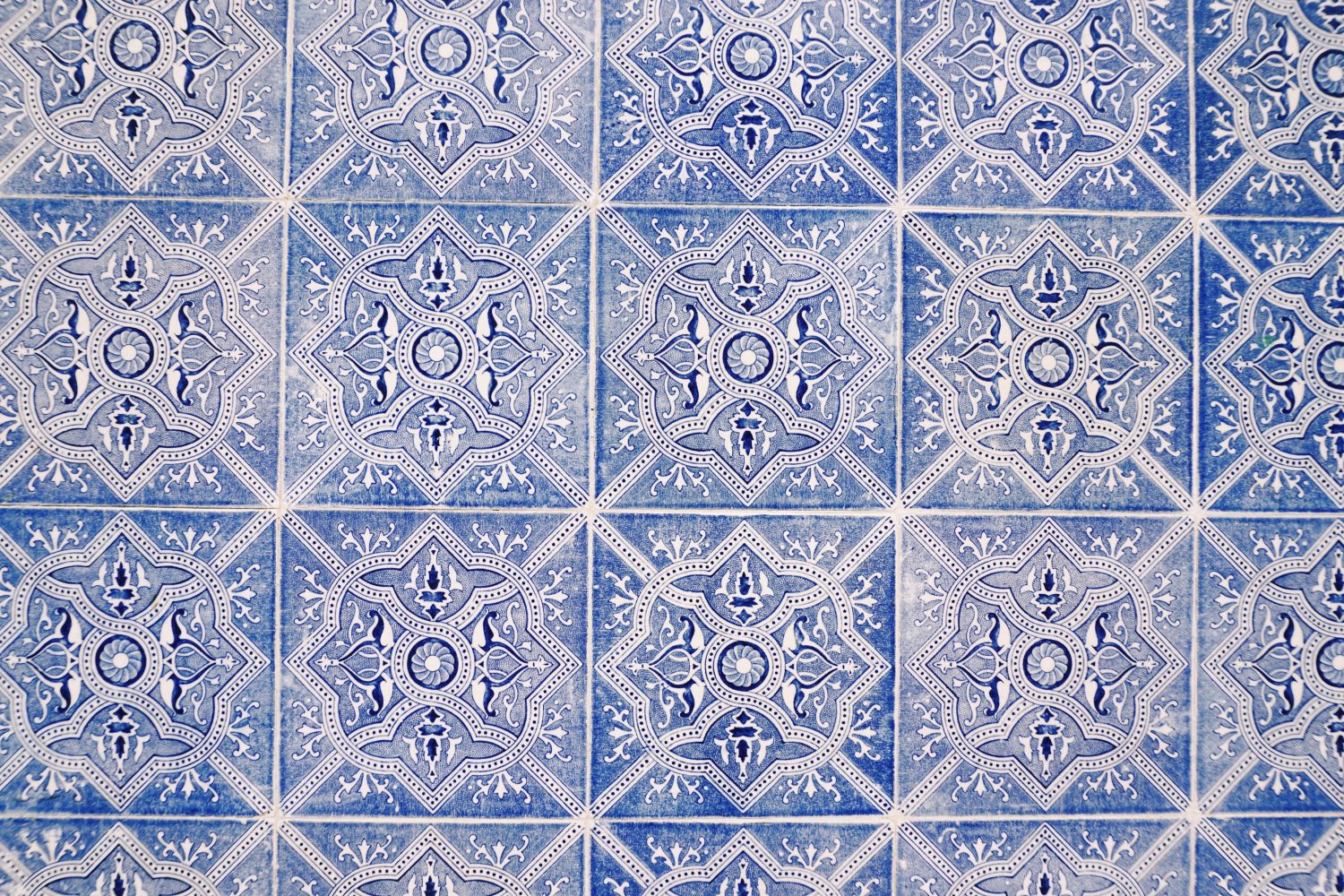
Azulejos The Story Behind Portuguese Tiles The Discoveries Of.
Last Updated on September 4, 2023 by Leslie Livingston Pinterest Exploring Lisbon? Here's my guide to the best places to find beautiful azulejo tiles in Lisbon Portugal. colorful facades of the Campo de Santa Clara I have a confession to make. I'm obsessed with Portuguese tiles.

Azulejos (Portuguese tiles) Antique tiles, Portuguese tiles, Patchwork tiles
Azulejos are hand-painted, tin-glazed ceramic tiles that decorate interiors and exteriors throughout Portugal. The word "azulejo" derives from the Arabic word "az-zulayj", meaning small, polished stone. The original function of azulejos wasn't ornamental; it was intended to protect the walls of homes and keep temperatures pleasant.

Azulejos Portugueses 36 r2hox Flickr
Portugal Images of Portugal often include the colorful glazed tiles found throughout the country. Azulejos, as these tiles are called, have been prominent in Portugal since the 1700s. Their inspiration came from the Moorish influence of invaders in Spain and Portugal as early as the 13 th century.

Azulejos Portugal Stock Photo Download Image Now iStock
The term "azulejo" has Arabic roots, meaning "small polished stone." The art of creating azulejos began on the Iberian Peninsula with the Arabs, who brought their mosaic techniques to decorate the walls of their palaces with intricate geometric patterns, symbolizing opulence.

A Brief History of Portugal's Beautiful Azulejo Tiles
But azulejos has its origin in the Arabic term for a small, smooth polished stone - aljulej or azulej - and this evolved to azulejo in Portuguese (pronounced ah-zoo-le-zhoo ). Follow us on YouTube! Tile art is not merely decorative; it forms a visual historical record of Portugal.

Azulejos Portugueses Tradicionais Fotografia de Stock Imagem Tile Artwork, Painting Tile
May 2, 2021 Blue-and-white Ceramics and Azulejo Tiles in Portugal A visual highlight of Portugal, exquisite azulejos (tin-glazed ceramic tiles) decorate the walls of palaces, churches, houses, train stations and other structures throughout the country.

Portuguese tiles azulejos Architecture Photos on Creative Market
Tiles (called azulejos) are everywhere in Portugal. They decorate everything from walls of churches and monasteries, to palaces, ordinary houses, park seats, fountains, shops, and train stations. They often portray scenes from the history of the country, show its most ravishing sights, or simply serve as street signs, nameplates, or house numbers.